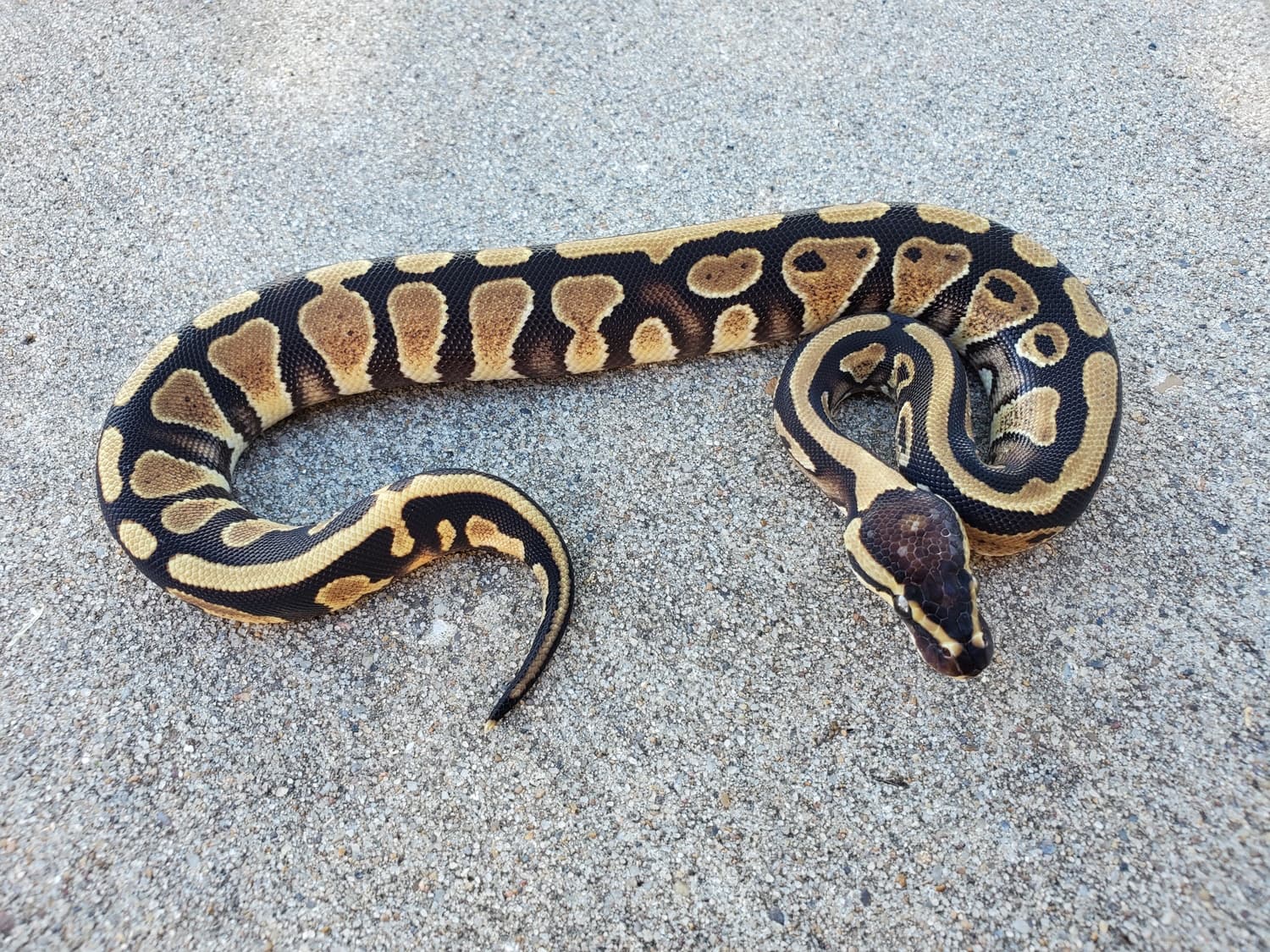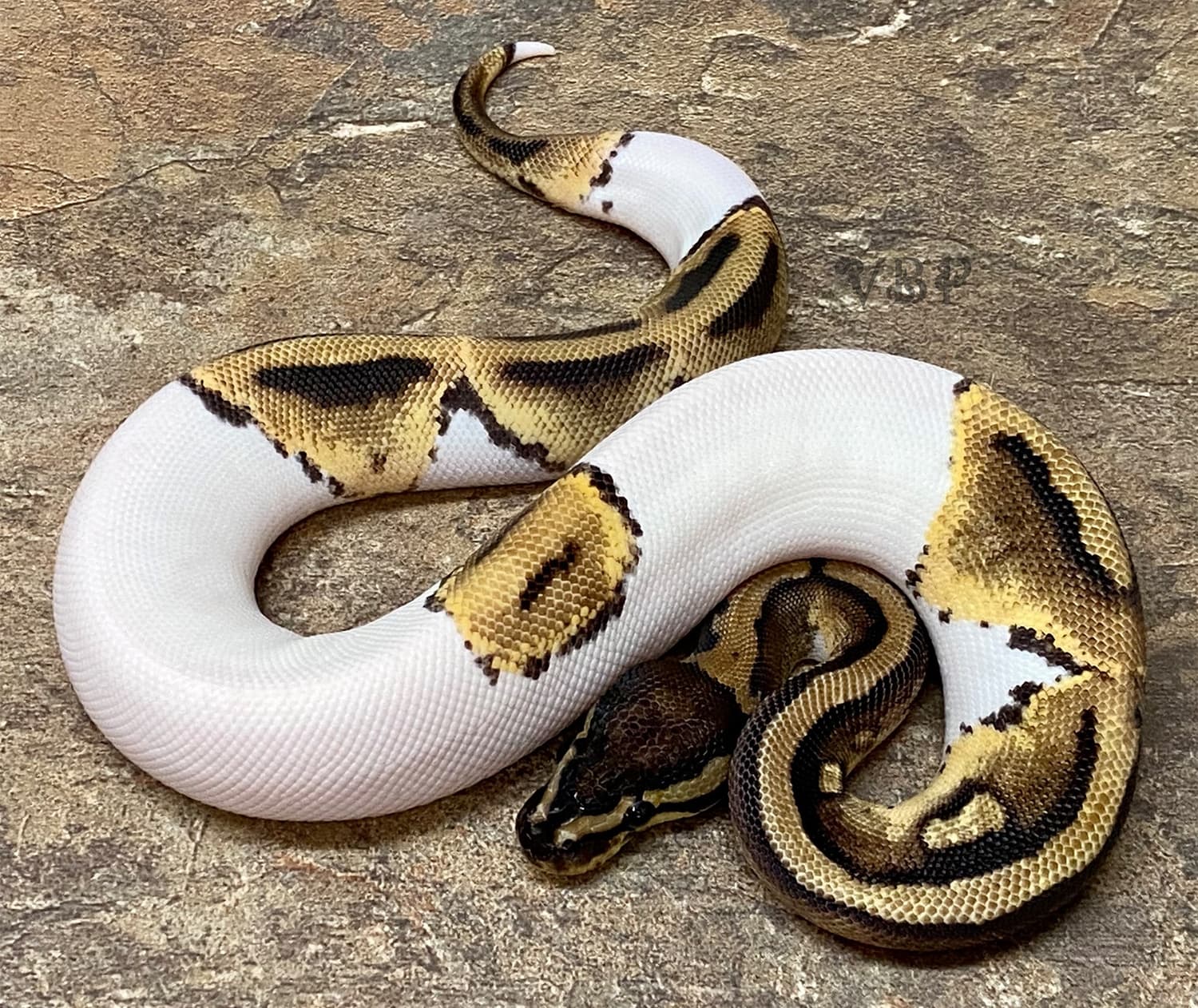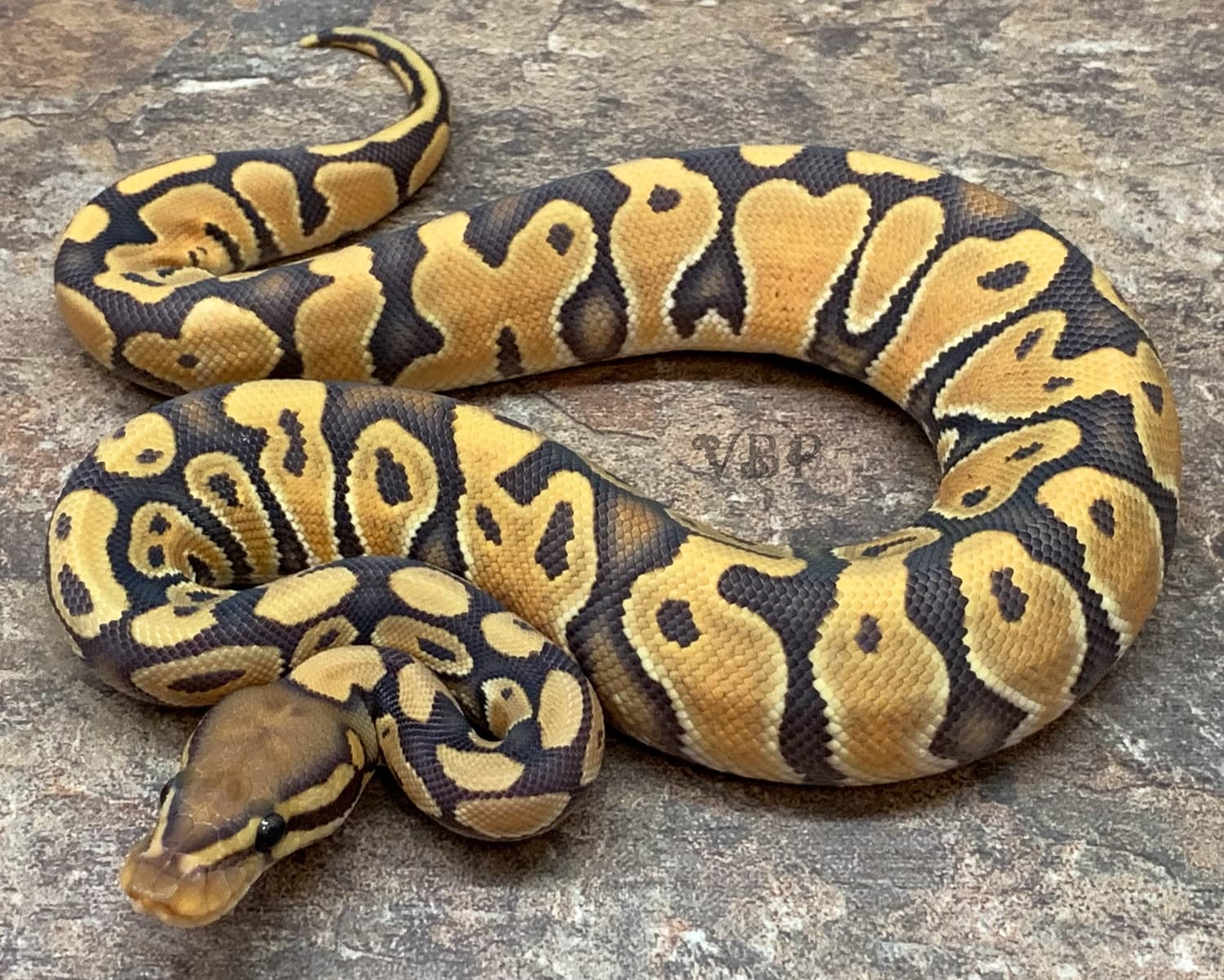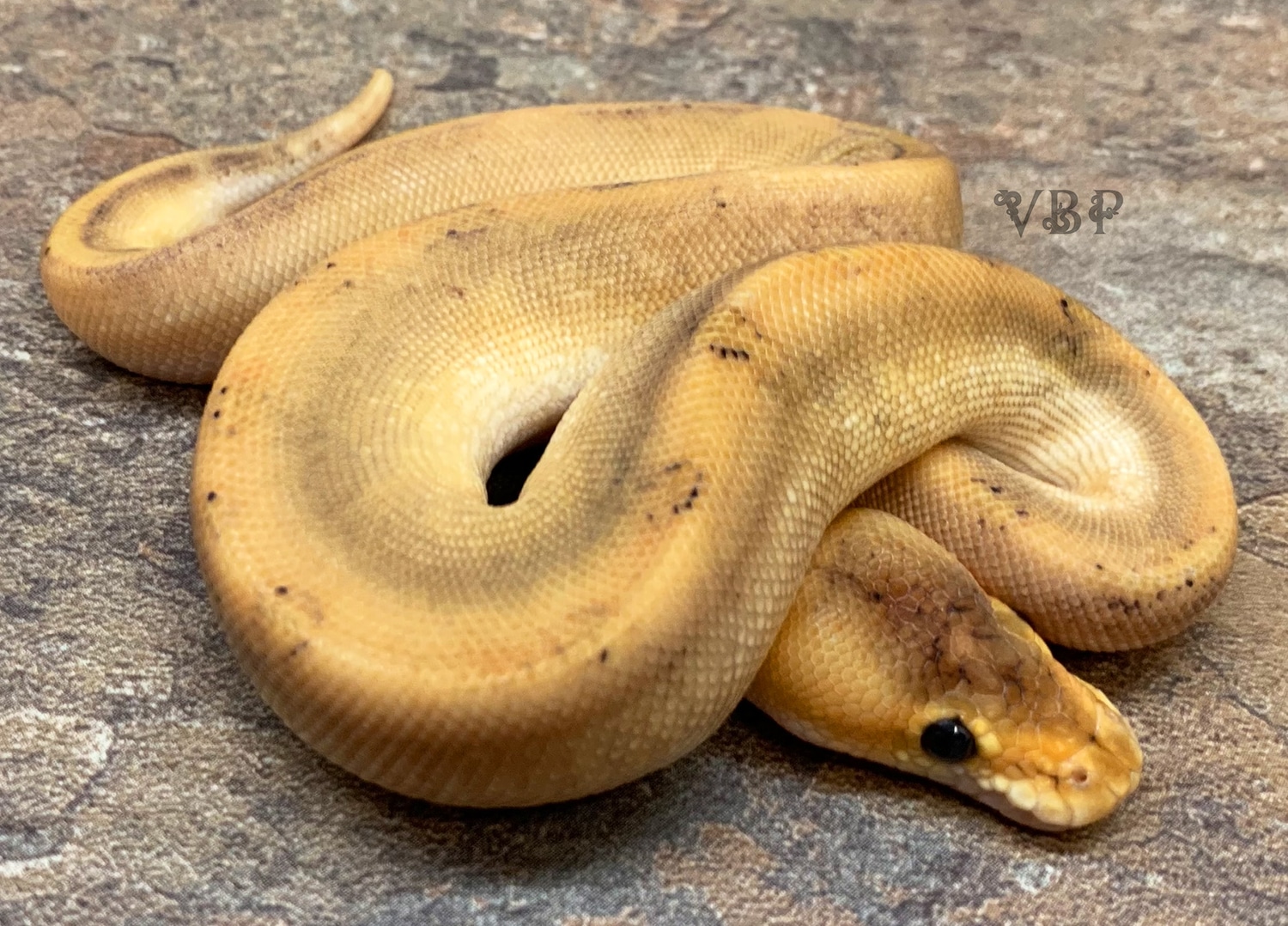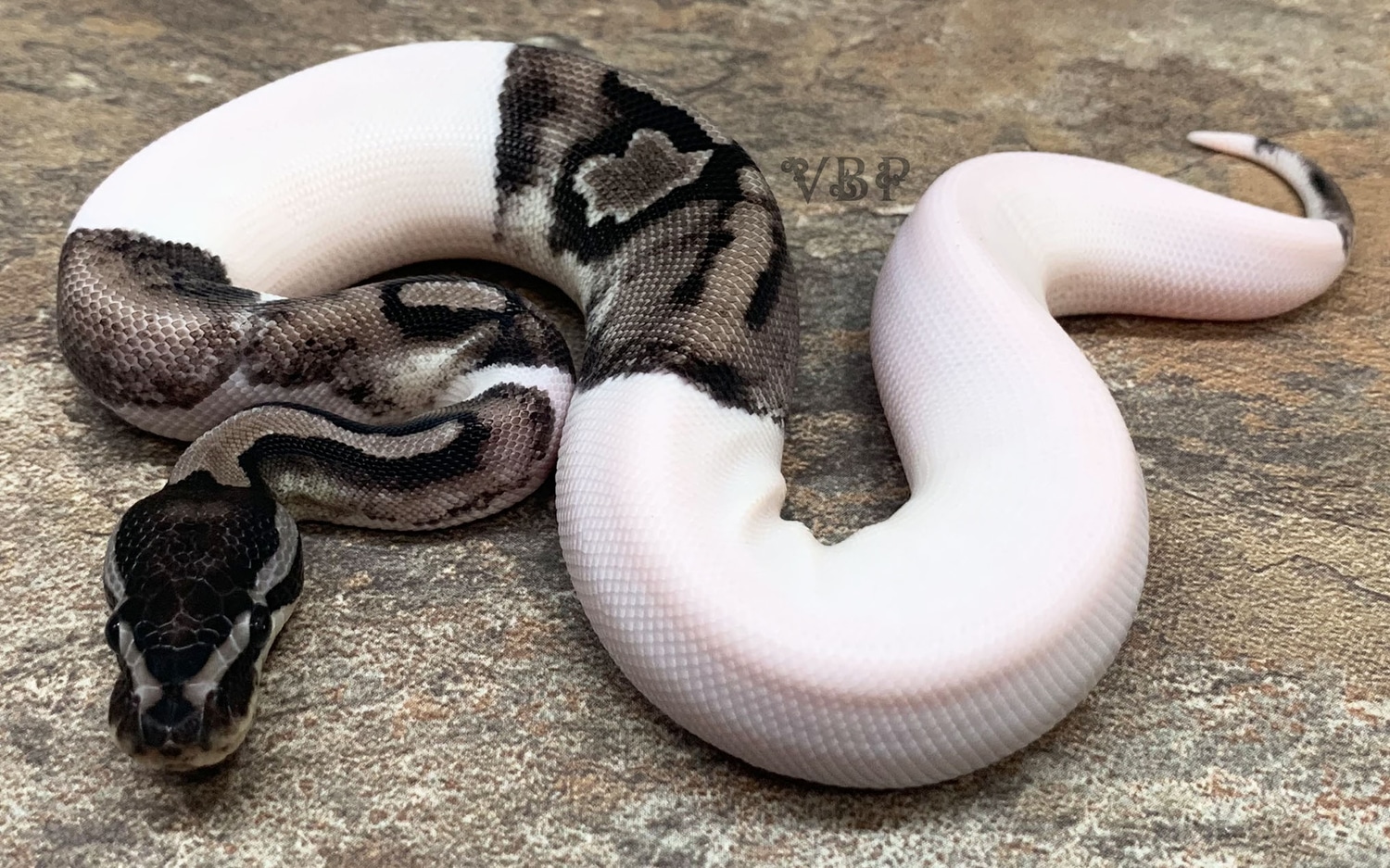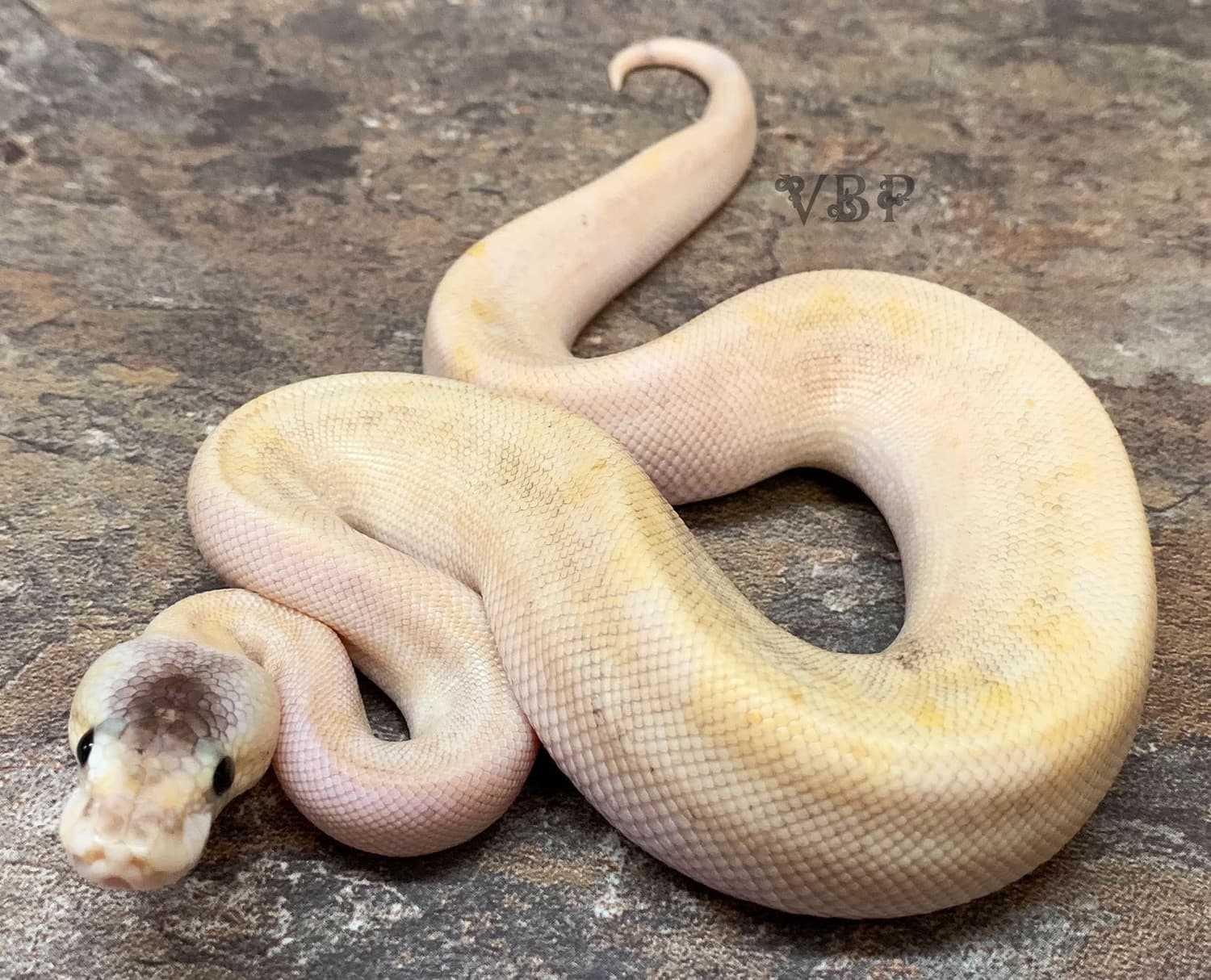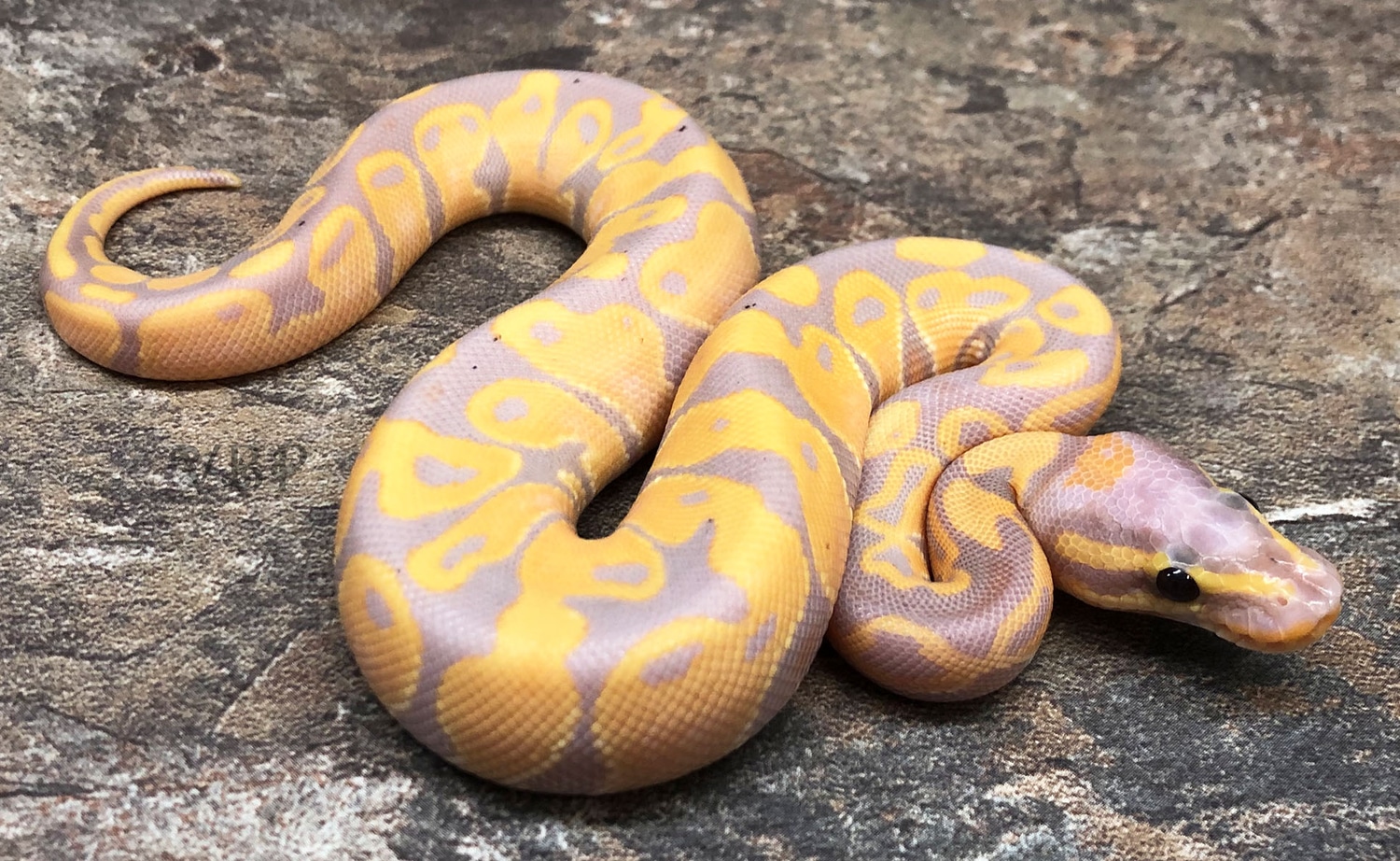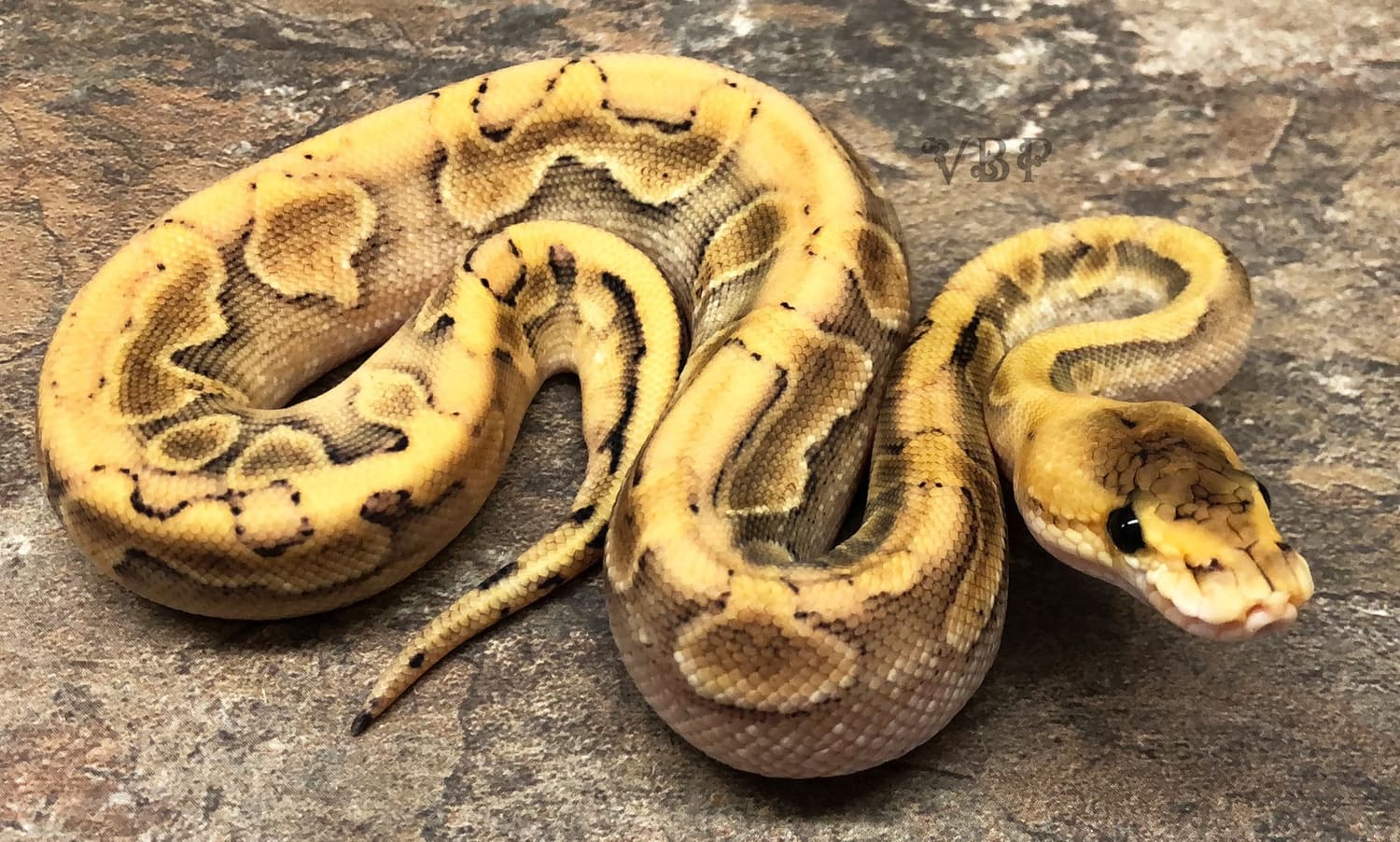Vesper
Type: Dominant
First Produced By: Vesper Ball Pythons
Issues: N/A
First Produced In: 1995
Availability: Rarest
Last Updated: 2022-03-24
Do you have any suggestions or corrections for this article?
Click here to contribute feedback
History
The genesis of the Vesper morph began in 1995. At that time, the thousands of morphs being produced today simply did not exist. The ball pythons available on the market then were primarily of two types: imported hatchlings and captive bred hatchlings produced from imports. We were successfully producing captive bred hatchlings from the imports we’d hand picked, but at that time, the cost of producing a hatchling in captivity was more than the cost of purchasing an imported hatchling. Despite the fact that imported hatchlings were often unhealthy and not particularly pretty, the demand they created for lower prices made selling captive bred hatchlings at a profit nearly impossible. So, we decided to try to produce a ball python worthy of a price high enough to make our business profitable.
With that goal in mind, we again visited importers like Strictly Reptiles in Miami, and culled through hundreds of baby Ball Pythons. We were looking for babies to add to our breeding stock that were brightly colored and had a distinctly banded appearance. Depending on an individual Ball Python’s particular region of origin in Africa, various colors and patterns, known as traits, are exhibited. The intensifying of desirable traits occurs through a complex genetic condition known as familial genetic typing. The familial genetic type differs from the genetic types we’re used to hearing about, such as dominant, inc-dominant and recessive. Dominant, inc-dominant and recessive genetic types are simple, meaning they deal with a single gene that’s either there or it’s not. The familial genetic type is complex, meaning it can be used to intensify the desirable traits in particular genes. The banding we were interested in intensifying is a familial genetic type, therefore, all of the offspring could be expected to exhibit strong banding, reduced pattern and more distinctive coloring than their parents. In common terminology, this is known as selective breeding and focuses on particular traits. By choosing the individuals that best represented the traits we were trying to enhance, and breeding them to each other, we were able to intensify those traits. We produced babies that were more brightly colored and showed stronger banding than their parents, including several Ringers.
The Ringer differs from a normal in that it has a white ring around its tail, and the white ring is connected across the belly by orange scales. As our goal was to develop a Ball Python with stronger banding, a cleaner pattern and brighter colors, we thought the Ringers might produce the results we were looking for. So, we bred the Ringers back to each other, with exceptional results.
Over many generations of this selective breeding, we’ve created a new morph with strong banding, reduced pattern and distinct coloration, which we’ve decided to name “Vesper”.
We have since bred our Vespers to several inc-dominant morphs with beautiful results.
Appearance
Body
Vespers are covered in strong banding, heavily reduced patterning and vibrant coloration throughout the body.
Proven Lines
No known proven lines
Related Traits
No known related traits
